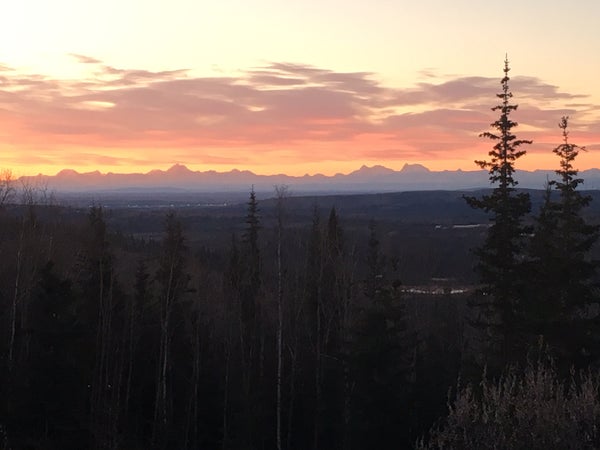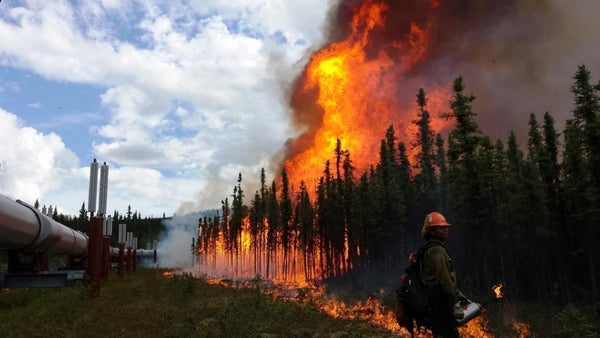This article was published in Scientific American’s former blog network and reflects the views of the author, not necessarily those of Scientific American
In many places, spring means melting snow, mud, and warmer, longer days—followed by an eruption of bright, succulent green leaves. In Alaska, however, spring not only brings garden preparations, berry picking, hunting and fishing, but also a threat that outsiders rarely consider: wildfires. With the state warming at twice the rate of the global average due to climate change, an earlier spring and warmer summer can mean a longer and more severe wildfire season.
And since 2000, in fact, Alaska has experienced three of its largest wildfire years on record. It’s not just warming temperatures: the long summer days in Alaska add another layer of complexity to a longer snow-free season. Although the sun does technically drop below the horizon for a few short hours, around the summer solstice there are 24 hours of light in Fairbanks. That means more drying of forest fuels and an increased risk for both lightning- and human-caused ignitions.
I am a boreal forest ecologist living in Fairbanks, with views of the mountains in the Alaska Range. But with that view comes a vulnerability to forest fires and the health impacts from smoke, even from distant fires. Like many homes in Fairbanks, mine is located in the hills surrounded by lots of trees. As summer approaches, I often think about what I would pack in my car should a fire burn through my backyard. I vividly recall the column of thick smoke filling the sky above one of the populated hills north of town, and the conversation I had with a friend as she packed her car for a possible evacuation. Luckily for my friend, firefighters were able to contain the blaze, and her family and home were unscathed.
On supporting science journalism
If you're enjoying this article, consider supporting our award-winning journalism by subscribing. By purchasing a subscription you are helping to ensure the future of impactful stories about the discoveries and ideas shaping our world today.

View of the Alaska Range from the author's home in Fairbanks. Credit: Jane Wolken
Climate science may not help me decide what to pack in my car, but it can guide my colleagues and me, along with local fire managers, in shaping the human response to larger, more frequent and severe wildfires. To protect life and property and to keep residents safe from the harmful effects of smoke, scientists and fire managers are working together to develop tools that better predict fire risk and behavior and improve seasonal fire forecasts on a local level.
Just like weather forecasts, fire forecasts need to be both near- and far-sighted. Decisions regarding hiring and deployment of personnel and resources need to be made quickly throughout the fire season, while budgeting decisions need to be made one to several years in advance. To address this mismatch, climate scientists are working to fine-tune the metrics of fire risk and behavior with high-resolution climate data that incorporate key variables such as forecasted temperature and precipitation.
Since Alaska is so enormous (it’s bigger than Texas, California and Montana combined), weather station data are sparse. Therefore, climate scientists must fill in the station gaps by modeling local and regional climate trends. Once there is confidence that a model accurately predicts the historical climate, the model can then be used to forecast climate data into the future. With input from fire managers and fuel specialists, the observed (weather station) and forecast (modeled) data can then be plugged into the metrics used to evaluate fire weather and behavior to develop both a near- and farsighted view of fire risk throughout the state.
For Alaskans, the unprecedented changes in the climate are a real concern. We are strongly connected to the land, as the majority of us live at the wilderness edge or in remote communities. My work at the interface of climate science research, communication and coordination provides me a behind-the-scenes look at how collaborative research can help to inform decision-making. This research is an iterative process undertaken by individuals who are also residents of the very communities impacted most by wildfires. Climate science won’t tell us what to pack in our cars, but it can help to inform the human response to Alaska’s growing wildfire footprint.
